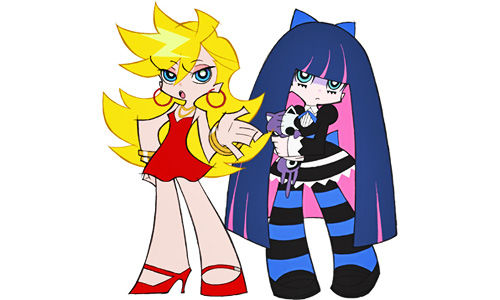Caramel Frappe said:
Dastardly said:
Really, the only common defining feature for people is the fact that it comes from Japan... but they'll put the same label on American-made stuff that models the style. So we have to talk elements of visual style... but Dragonball Z looks nothing like Cowboy Bebop, when you get right down to it, so what defines this style?
This is a really good example.
Every anime from Japan has a different style to it. Each has it's own unique style because of how the animation is drawn out. Really any country can do anime just as well but what would be helpful of course is to label that anime from whom made it. So for
Legend of Korra, we'd call it an American anime so people understand and not get gripes over it for whatever reason.
The Boondocks is an anime, but honestly it's an American anime. Even if an anime was to take place in Japan but was made from America, it would still be an American anime. If Europe made an anime that takes place in America, it wouldn't be an American anime it would be a European anime which makes no difference... the style resorts to anime period. People getting on others for this topic is very silly to me. It'd be like if I got on someone for saying 'Your chocolate candy bar originally came from the rain forest!' and ranted. So what if the ingredients came from the rain forest in order to make chocolate? It's chocolate sold in a country and that's what it is now.
The Boondocks is an interesting specimen for a couple reasons. It is decidedly created with an almost exclusive black cast, black producer, and black creative director. Historically the de-localization of the African people to the United States included culture annihilation, segregation, economic disparity, coupled with the emergence of strong African American leaders, there is every indication of "culture - inside of a culture", "counter-culture".
The animation "is in and of itself" a borrow from the Japanese animation style and for good reason. Clearly Aaron McGruder was influenced by both comics and the Japanese products that where coming to the states during the late 80's and 90's. The Japanese style was emergent post WW2 and is in and of itself a copy of the old American comic book. This allows the Boondocks a certain freedom in design due to the tropes of Japanese animation (visual communication of action, facial expression... on and on) and a loose irony of two groups of peoples that have emerged cultural art forms which are the direct result of a heterogeneous mixture of indigenous identity and culture, melding with prevailing identities and cultures.
The very framing of Boondocks is very much in the comic/manga approach both structurally, thematically, artistically (as art assets).
For every reason the Boondocks works, is decidedly why an "anime" of Squidbillies simply wouldn't. For me it comes down to what one is trying to convey to the audience, through character animations, action, spacial relationships. Boondocks utilizing the trope factory of Japanese animation, gives it a structure that lends itself to the stories as they are produced. Uncle Ruckus is a great example of a character that follows the "Gonk" trope of Japanese animation. Where as in Squidbillies we may be hard pressed to identify the "Gonk"... all the characters are "Gonks".
To try to get at "it", borrowing an approach and structure of one product is a good thing, when that structure lends itself to the narrative and information one wants to communicate.
Copying something just to copy a "style", appears more like
dick-riding, an attempt to create an association of one product with the popularity of another product. Looking right at the Mass Effect anime on this one. We could probably look at the animatrix as well and call which ones worked and which ones didn't in the style, likely for thematic reasons alone.
It's a copy of style without any of the substance, any of the "character" that comes with the established art form.
I said it before and I'll mention it again. One cannot simply "copy" Jack Daniels. It is the proprietary process that goes into the product beyond simply fermenting some corn in an oak barrel. To get right scientific with it, no matter what one makes, the spectroscopy will reveal differences. Now what one makes will be corn whiskey, but it won't be Bourbon (by definition) and certainly not JD.
Chocolate is going to be the same thing. By your description I will associate it with the RPG Lost Odyssey. Made in the states... by a predominantly Japanese crew... it is a Japanese RPG. The ingredients are all Japanese.
Chocolate made with Mexican chocolate with Mexican sugar, spices, and milk from a Mexican cow will be different than chocolate out of Bovaria which imported it's chocolate from Mexico... all the other ingredients are different, the process is different, the proprietary "character" of the production is different. A connoisseur "easily" taste the difference. The taste of the people that the product is for is different. It's different. Can't help but be.
I would put this whole thing to the test...
wheel up to the local anime importer... plop into the dvd/blu-ray player 10 different shows/films from different places, have the audience check off a list as to where they think the animation was made... and I am confident that even the most mild of enthusiast could tell you with shrug... 80 percent accuracy where they were made. A collector? No contest, nearly 100 percent of the time. A really good study, would be able to tell you what parts of the animation where made where and by whom.
Can't get around it.
Products are reflections of the people and cultures that make em.
Copied shit looks, taste, feels, like it was made by someone interested in copying.


